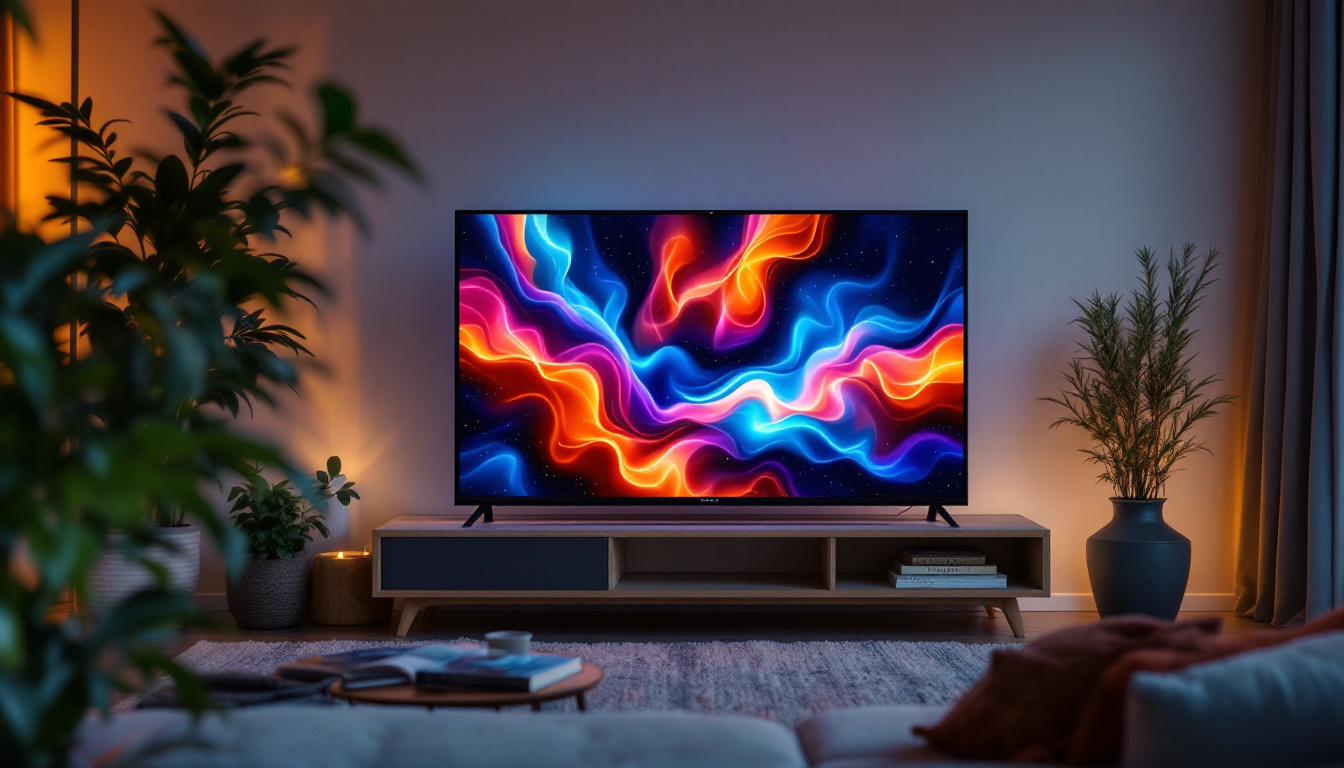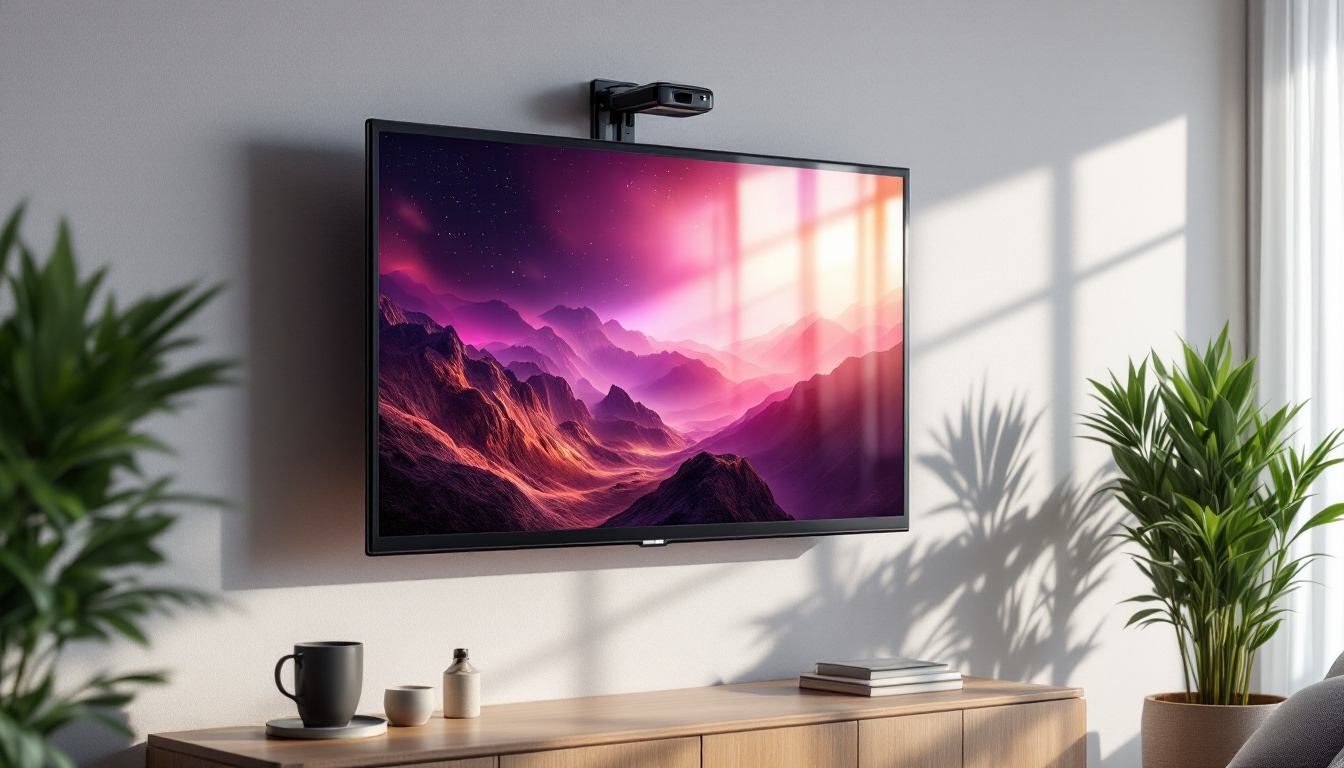In the world of display technology, two terms frequently come up: LCD and LED. While many people use these terms interchangeably, they refer to different technologies that serve a similar purpose. Understanding the distinctions between LCD and LED monitors can help consumers make informed decisions when purchasing a display. This article delves into the specifics of both technologies, their advantages, disadvantages, and how they compare in various applications.
Understanding LCD Technology
Liquid Crystal Display (LCD) technology has been a staple in the display industry for decades. It utilizes liquid crystals sandwiched between two layers of glass or plastic. When an electric current passes through the liquid crystals, they align to allow varying degrees of light to pass through, creating images on the screen. This innovative technology has transformed how we interact with visual media, from televisions to computer monitors, and even smartphones. The evolution of LCD technology has led to thinner, lighter, and more energy-efficient displays that continue to enhance user experiences in both personal and professional settings.
The Components of LCD Displays
LCD monitors consist of several key components that work together to produce images. The primary elements include:
- Liquid Crystals: These substances respond to electric currents and control the light passing through them.
- Backlight: Since liquid crystals do not emit light on their own, a backlight is necessary to illuminate the display. Traditionally, this has been achieved using fluorescent lamps, but advancements have introduced LED backlighting, which offers better energy efficiency and brightness control.
- Polarizers: These layers help control the light entering and exiting the liquid crystal layer, ensuring that the image appears correctly. The precision of polarizers is crucial, as they directly influence the contrast and clarity of the displayed images.
Advantages of LCD Monitors
LCD monitors have several advantages that have contributed to their popularity:
- Thin and Lightweight: LCD technology allows for slim designs, making them easy to mount and transport. This portability has made LCDs the go-to choice for modern offices and homes, where space is often at a premium.
- Energy Efficiency: Compared to older CRT monitors, LCDs consume less power, making them more environmentally friendly. This efficiency not only reduces electricity bills but also contributes to a smaller carbon footprint.
- Good Color Reproduction: LCDs can produce vibrant colors and sharp images, making them suitable for various applications. From graphic design to gaming, the accurate color representation of LCDs enhances the visual experience, allowing users to enjoy rich and immersive content.
Disadvantages of LCD Monitors
Despite their advantages, LCD monitors also have some drawbacks:
- Limited Viewing Angles: The image quality can degrade when viewed from off-angles, leading to color distortion. This limitation can be particularly noticeable in larger displays or when multiple viewers are watching from different positions.
- Response Time: LCDs may struggle with fast-moving images, resulting in motion blur. This can be a concern for gamers or those watching action-packed movies, where clarity during fast scenes is essential.
- Backlight Bleeding: Uneven backlighting can lead to areas of the screen appearing brighter than others, affecting the overall image quality. This phenomenon can be distracting, especially in darker scenes, where uniformity of light is crucial for immersion.
As technology continues to advance, manufacturers are continually working to address these disadvantages. Innovations such as improved panel technologies, including In-Plane Switching (IPS) and Vertical Alignment (VA), aim to enhance viewing angles and response times. Moreover, the integration of features like adaptive refresh rates and local dimming is helping to mitigate issues like motion blur and backlight bleeding, pushing the boundaries of what LCD technology can achieve.
Exploring LED Technology
Light Emitting Diode (LED) technology is often marketed as an advancement over traditional LCD displays. However, it is essential to understand that LED monitors are essentially a type of LCD monitor that uses LED backlighting instead of fluorescent lamps.
Types of LED Backlighting
LED monitors can utilize different types of backlighting, which can significantly impact performance:
- Edge-Lit LED: LEDs are placed around the edges of the screen, allowing for a thinner design. While this method saves space, it can lead to uneven lighting.
- Full-Array LED: This method employs a grid of LEDs behind the screen, providing more uniform lighting and better contrast ratios.
- Local Dimming: Some full-array LED monitors feature local dimming, allowing specific areas of the screen to dim or brighten independently, enhancing contrast and black levels.
Advantages of LED Monitors
LED monitors offer several benefits that make them appealing to consumers:
- Improved Energy Efficiency: LED backlighting uses less power than traditional fluorescent backlighting, contributing to lower energy bills.
- Better Contrast Ratios: With the ability to control backlighting more effectively, LED monitors can achieve deeper blacks and brighter whites.
- Longer Lifespan: LED technology generally has a longer lifespan compared to traditional LCDs, reducing the need for frequent replacements.
Disadvantages of LED Monitors
While LED monitors have many advantages, they are not without their limitations:
- Cost: LED monitors can be more expensive than traditional LCDs, which may deter budget-conscious consumers.
- Color Accuracy: Some LED displays may struggle with color accuracy, particularly in edge-lit models.
- Potential for Flickering: Certain LED monitors may exhibit flickering at lower brightness levels, which can lead to eye strain.
Comparing LCD and LED Monitors
When deciding between LCD and LED monitors, several factors come into play. Understanding the differences can help consumers choose the right display for their needs.
Image Quality
Image quality is often the most critical factor for consumers. While both LCD and LED monitors can produce high-quality images, LED monitors generally outperform traditional LCDs in terms of contrast and brightness. The ability of LED technology to achieve deeper blacks and brighter whites enhances the overall viewing experience, making it particularly appealing for watching movies or playing video games.
Energy Consumption
Energy efficiency is another crucial consideration. LED monitors tend to consume less power than traditional LCDs, making them a more environmentally friendly option. This efficiency can lead to lower electricity bills, especially for users who spend extended periods in front of their screens.
Price Point
Price is often a deciding factor for many consumers. Generally, traditional LCD monitors are less expensive than their LED counterparts. However, the price gap has been narrowing as LED technology becomes more prevalent. For those on a budget, a high-quality LCD monitor may suffice, while those seeking superior performance may opt for an LED monitor despite the higher price tag.
Applications of LCD and LED Monitors
Different applications may benefit from either LCD or LED technology. Understanding the intended use can help guide the decision-making process.
Office Use
For typical office tasks such as word processing, spreadsheets, and browsing, both LCD and LED monitors perform adequately. However, LED monitors may provide better color accuracy and brightness, which can enhance productivity, especially in well-lit environments.
Gaming
Gamers often prioritize response time and image quality. LED monitors, particularly those with fast refresh rates and low response times, are generally preferred for gaming due to their superior performance in fast-paced scenarios. Additionally, the enhanced contrast ratios of LED displays can make gaming more immersive.
Graphic Design and Multimedia
For graphic designers and multimedia professionals, color accuracy is paramount. While both LCD and LED monitors can provide good color reproduction, high-end LED monitors with advanced color calibration capabilities are often favored in professional settings. These monitors can display a broader color gamut, ensuring that designs appear as intended.
Future of Display Technology
The display technology landscape is constantly evolving. As manufacturers continue to innovate, new technologies are emerging that may further blur the lines between LCD and LED displays.
OLED Technology
Organic Light Emitting Diode (OLED) technology is gaining traction as a potential successor to both LCD and LED displays. Unlike LCDs, OLEDs do not require a backlight, as each pixel emits its own light. This allows for exceptional contrast ratios, vibrant colors, and ultra-thin designs. While OLED monitors tend to be more expensive, their performance in terms of image quality is often unparalleled.
MicroLED Technology
MicroLED is another emerging technology that promises to deliver the benefits of OLED without some of its drawbacks, such as burn-in issues. MicroLED displays consist of tiny, self-emitting LEDs that can create stunning visuals with high brightness and contrast. As this technology matures, it may become a viable alternative to both LCD and LED displays.
Advancements in LED Technology
Even within the realm of LED technology, advancements continue to be made. Mini-LED and MicroLED are two innovations that enhance the performance of traditional LED displays. Mini-LED technology uses smaller LEDs to improve backlighting precision, while MicroLED offers even finer control over individual pixels. These developments may lead to better image quality and energy efficiency in future displays.
Conclusion
In summary, both LCD and LED monitors have their unique advantages and disadvantages. While traditional LCDs are often more budget-friendly, LED monitors provide superior image quality, energy efficiency, and longer lifespans. The choice between the two ultimately depends on the specific needs and preferences of the user. As technology continues to evolve, staying informed about the latest advancements in display technology will empower consumers to make the best decisions for their viewing experiences.
Whether one opts for an LCD or an LED monitor, understanding the differences can lead to a more satisfying purchase. As the display market evolves, keeping an eye on emerging technologies like OLED and MicroLED may also provide exciting options for future upgrades.
Discover the Future of Display with LumenMatrix
As you consider upgrading your visual experience, remember that the right display technology can make all the difference. LumenMatrix stands at the forefront of LED innovation, offering a comprehensive range of LED display solutions tailored to meet your needs. From captivating Indoor LED Walls to dynamic Outdoor LED Displays, and from versatile Vehicle LED Displays to sleek LED Poster Displays, our mission is to transform your visual communication. Experience the pinnacle of engagement with our LED Sports Displays, Floor LED Displays, and Custom LED solutions. For a seamless integration, explore our All-in-One LED Displays and LED Transparent Displays. Elevate your brand’s visibility and create unforgettable visual experiences with LumenMatrix. Check out LumenMatrix LED Display Solutions today and step into the future of display technology.































